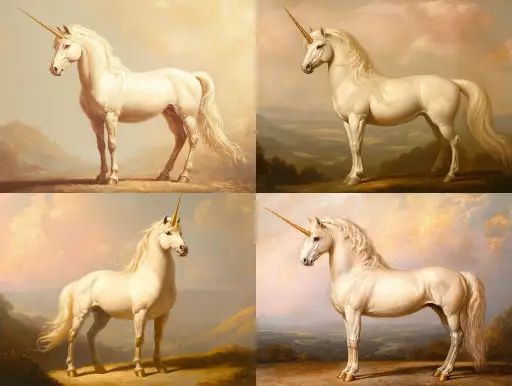Explore the Best AI Image Gallery

Beyond the Canvas: How AI-Generated Visual Content is Transforming the Creative Landscape
The realm of visual creation is undergoing a seismic shift with the advent of Artificial Intelligence (AI)-generated content. This transformative technology, capable of producing stunning images, videos, and even 3D models, is poised to reshape the creative landscape, impacting artists, designers, marketers, and consumers alike.
A New Era of Creative Possibilities
AI-powered tools are democratizing access to high-quality visual content, empowering individuals with limited technical skills to bring their ideas to life. From generating concept art for films and video games to designing personalized marketing materials and creating unique artwork, the applications are seemingly limitless.
Applications Across Industries
- Marketing and Advertising: AI can generate captivating visuals for social media campaigns, product advertisements, and website designs, personalizing content to resonate with specific target audiences.
- Film and Entertainment: Imagine generating realistic backgrounds, special effects, or even entire scenes using AI. This technology has the potential to revolutionize filmmaking, streamlining production processes and enabling new creative possibilities.
- Design and Architecture: Architects and designers can leverage AI to explore innovative concepts, generate 3D models, and visualize their creations with stunning realism, pushing the boundaries of architectural design.
- Education and Research: AI-generated visuals can enhance learning experiences by creating interactive simulations, visualizing complex data sets, and bringing abstract concepts to life in engaging ways.
Ethical Considerations: Navigating the Uncharted Waters
While the potential of AI-generated visual content is undeniably vast, it also raises ethical concerns that require careful consideration:
Copyright and Intellectual Property
Who owns the copyright to AI-generated artwork? Establishing clear guidelines for ownership and attribution is crucial to protect the rights of both creators and users of AI-generated content.
Bias and Representation
AI algorithms are trained on vast datasets, which can inadvertently perpetuate existing biases. It is essential to ensure that AI-generated content is inclusive and representative of diverse cultures and perspectives.
Job displacement
The automation capabilities of AI raise concerns about potential job losses in creative industries. However, its also important to recognize that AI can augment human creativity and create new opportunities for collaboration.
Looking Ahead: The Future of AI-Generated Visual Content
As AI technology continues to evolve at a rapid pace, we can expect even more sophisticated and versatile applications in the realm of visual content creation.
- Hyper-personalization: Imagine AI tailoring visuals based on individual preferences, creating truly unique and engaging experiences.
- Immersive Experiences: AI will play a crucial role in developing immersive virtual and augmented reality environments, blurring the lines between the digital and physical worlds.
- Generative Design Systems: AI algorithms will enable designers to create dynamic and adaptable design systems, generating variations and iterations based on specific parameters.
The future of visual content creation is undeniably intertwined with AI. By embracing the possibilities while addressing ethical challenges head-on, we can unlock a new era of creative expression and innovation.












](https://images.ai-img.art/thumbnails/150/bddf3ae4a232290858389b933c866ad3be429ef2e25c23a9f4d7713ed6e44d0b.webp)





](https://images.ai-img.art/thumbnails/150/c2c9c48b38fae37f0a457b80b084ed01ba803810fc8f488c8f610c03abc74049.webp)








](https://images.ai-img.art/thumbnails/150/008b5d5d49667cc2e93a5f8a8adfaa545963da99c39ff0901f5296294636400d.webp)


](https://images.ai-img.art/thumbnails/150/f9584153b4cddd8c9fab611dc10247549b275c59bc173251e37d0935874f9deb.webp)

](https://images.ai-img.art/thumbnails/150/4289d1230b86a96c4d556636c3167bed0ef38f850826549517e4e45db4d87bf7.webp)
](https://images.ai-img.art/thumbnails/150/f67d9af3398150f2ab1bcf250717fea134275e2ca896252b54a4d9bb3719f9ac.webp)







